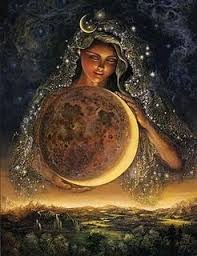Gea y Crono
Gea
En la historia de la creación de los antiguos Griegos el caos precedió a
todo. El caos estaba hecho de vacío, masa, oscuridad y confusión.
Entonces surgió la tierra, en la forma de Gea. Gea era la personificación de la Diosa Madre.
Hesíodo cuenta que ella sola engendró a Urano (el cielo) y Ponto (el mar). También dio a luz a los Titanes, los Cíclopes y los Hecatónqueros. Así que de ella
brotaron el cielo estrellado, las montañas, los llanos, los mares y los ríos.
Algunas fuentes,afirman que Gea es una evolución de la Gran Madre del preindoeuropeo, una diosa de la vida y la muerte que había sido venerada ya desde el Neolítico en Oriente Próximo, Anatolia, Malta y las tierras etruscas.
In the creation story of the ancient Greeks chaos preceded anything else. Chaos was made of emptiness, mass, darkness and confusion.
Then came the earth, in the form of Gea. Gea was the personification of the Mother Goddess.
Hesiod said that her alone gave birth to Uranus (Heaven) and Pontus (the sea). She also gave birth to the Titans, the Cyclops and Hecatónqueros. So from her bloomed the starry sky, mountains, plains, seas and rivers.
Some sources claim that Gea is an evolution of the Great Mother of the pre-Indoeuropean period, a goddess of life and death that had been worshiped since the Neolithic in the Near East, Anatolia, Malta and the Etruscan lands.

Crono
En los mitos griegos, Crono era el dios de las Edades: desde la Dorada hasta la de Bronce.
Surgió al principio de los tiempos formado por sí mismo como un ser
incorpóreo y serpentino con tres cabezas: de hombre, de toro y de león.
Se entrelazó con su compañera Ananké, la Inevitabilidad, en una espiral en torno al huevo primigenio y lo
separó, formando el universo ordenado de la tierra, el mar y el cielo.
Chronos permaneció como el dios remoto e incorpóreo del tiempo
que rodeaba el universo, conduciendo la rotación de los cielos y el
eterno paso del tiempo.
Ocasionalmente se aparecía a Zeus
con la forma de un hombre anciano de largos cabellos y barba blanca,
pero casi siempre permanecía como una fuerza más allá del
alcance y el poder de los dioses más jóvenes.
In Greek myths, Cron was the god of Ages: from Bronze to Gold.
It emerged at the beginning of time itself formed as an incorporeal, serpentine being with three heads: a man, a bull and a lion.
He Intertwined with his partner Ananke, the inevitability, in a spiral around the primigenial egg and which was separated to form the ordered universe of earth, sea and sky.
Chronos remained remote, disembodied god of time around the world, driving the rotation of the heavens and the eternal passage of time.
He occasionally appeared before Zeus in the form of an old man with long hair and white beard, but almost always remained a force beyond the reach and power of the younger gods.

Basándose en ambos dioses se ha creado el Atlas Histórico Universal GeaCron,
que permite visualizar las diferentes civilizaciones y asentamientos humanos desde el año 3.000 a.C. hasta la actualidad.
Así, podrás comprobar cómo se ha ido configurando nuestro mundo.
Las fechas que podrás ver en este mapa son:
3.000 a.C - 1.000 a.C - 330 a.C - 30 a.C. - 280 - 711 - 950 - 1.200 - 1.500 y 1.790 .
Para ver otra cronología de tu interés pulsa este link GeaCron.
Based on both Myths the World Historical Atlas GeaCron was created. It enables you to see different civilizations and human settlements over time, since 3,000 b.C until nowadays. Clicking on the arrows of this map you will see the following dates:
3.000 a.C - 1.000 a.C - 330 a.C - 30 a.C. - 280 - 711 - 950 - 1.200 - 1.500 y 1.790
If you want to see a different cronolgy click on this link.

No hay comentarios:
Publicar un comentario